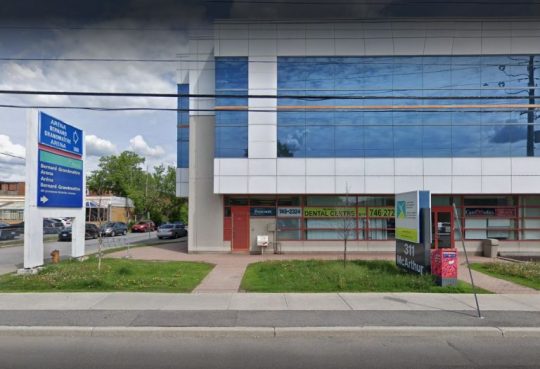Text
Makeshift shelters in Ottawa to remain open due to spike in migrants

By Andrea Bennett
Posted Aug 22, 2023, 9:45AM EDT.
Last Updated Aug 22, 2023, 3:57PM EDT.
With a surge of refugee claimants overwhelming some shelters across Ottawa, city staff working in physical distancing centres (PDCs) have secured permanent housing for 375 people since 2020.
Still, rising numbers seeking shelters have offset any progress.
Two of the eleven PDCs that have opened since 2020 remain – the Dempsey Community Centre in Alta Vista and Bernard Grandmaitre Arena in Vanier.
However, the remaining centres have been maintained for reasons other than what they were initially intended for, according to Marty Carr, Ottawa city councillor for Alta Vista.
Coun. Carr told The Sam Laprade Show on Monday, Aug. 21, that physical distancing centres were designed during the COVID-19 pandemic to reduce crowding within the shelter system; however, an estimated 50 per cent of those seeking shelter in pandemic-era community centres are newcomers.
Newcomers to Canada are discovering there’s nowhere for them to stay, and they now account for at least half of the population in those community centres.
“We’re taking a couple of steps forward but taking far more back because of the influx of newcomers arriving with no other place to stay,” she explained.
Refugee claimants have few other options, as local shelters, including the Ottawa Mission operating at overcapacity.
While physical distancing centres serve singles only, a system of family shelters is offered as well, where newcomers are offered temporary housing in hotels and motels.
As Canada plans to ramp up immigration by 65 per cent – in a jump from around 300,000 to 500,000 immigrants per year – some question whether we have the infrastructure to support this intake.
And yet, nearly 60,000 applications from asylum seekers have been processed as of June, marking the highest mid-year count, dating back to at least 2015.
“Ottawa has been looking for solutions; they’ve examined over 160 public listings for office space, 53 industrial spaces, and inquired with community partners, including school boards, provincial and federal governments,” she explained.
But the councillor said they need to identify places to house newcomers aside from community centres.
“We’re at a point where we need to look at the city helping non-profits to acquire properties,” added Carr.
The councillor goes on to say securing more funding is the first step in improving our local shelter system. She’s calling on more support from all levels of government and emphasizes an increase in federal-level funding.
While the federal government provides funding through the Interim Housing Assistance Program (IHAP), Carr explained it’s insufficient in facing overflowing shelters and an affordable housing crisis.
“They (federal government) have an immigration and refugee policy that’s inconsistent with their housing policy, and that’s a big challenge,” Carr pointed out.
To date, the City has received $26.1 million in IHAP funding for costs incurred between 2017 and 2022. As of Monday, Aug. 21, the federal government said that they have recently received a request from the City of Ottawa for funding of 2023 costs under the extension of IHAP.
Director of housing services with the City of Ottawa, Paul Lavigne told CityNews Ottawa that staff has “submitted a preliminary funding request of $13.6 million from Immigration, Refugees and Citizenship Canada under the extension of the Interim Housing Assistance Program (IHAP),” and that their funding request is “based on estimated costs that will be incurred by the municipality in 2023 for the provision services to asylum claimants as they relate to interim housing.”
During a community services committee meeting in June, a transition plan was announced that would move residents out of PDCs. According to Carr, the city relied on an increased rental housing allowance and considered leasing a private-market facility to cope with the winter rush into shelters.
But with unprecedented numbers relying on shelter services, city staff now question whether funding will be sufficient as they face new challenges.
“A lot of the burden is falling on the voluntary sector, with food banks experiencing the highest usage they’ve ever seen, and that’s driven a lot by the newcomer population,” said Carr.
Since 2017, the Ottawa Food Bank said they’ve seen a 39 per cent increase in demand, serving more people than at any other time in its 38-year history.
This past February, city staff said both shelters would remain open until mid-August, with a plan to transition away from PDCs as soon as possible. But given the crisis Ottawa shelters are now facing, there’s no word on when this transition will happen.
Carr explained while shelters can’t keep up with this influx in demand, she reassures residents and newcomers that the city is working efficiently to improve our shelter system.
“We have a city council that’s dedicated to ensuring we find solutions,” said Carr. “You’ll hear more to come over the next few months.”
0 notes